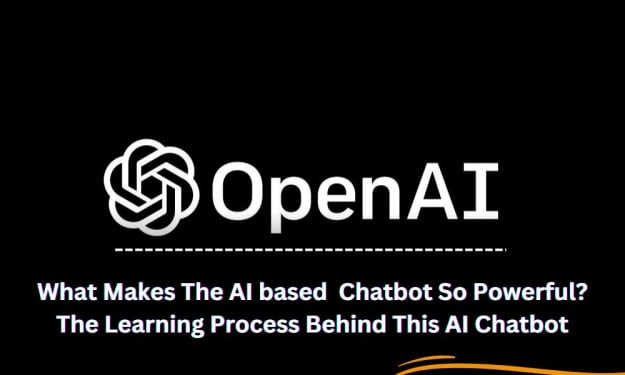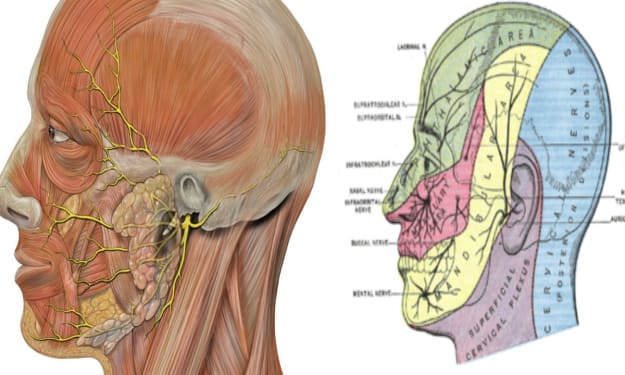ChatGPT Revolutionizing Conversational AI: The Power Within
From Talk to Action: The ChatGPT Revolution in Conversational AI

Introduction
In the world of artificial intelligence, there has been a revolution brewing. ChatGPT is at the forefront of this movement, changing the way we interact with technology and one another through its innovative conversational AI system. The power of this new technology is astounding, promising to transform industries from healthcare to customer service.
ChatGPT Revolutionizing Conversational AI: The Power Within
At its core, ChatGPT relies on natural language processing and machine learning algorithms to communicate with users in a human-like manner. This breakthrough allows for more efficient communication between humans and machines, creating a seamless experience that feels like talking to a real person. With ChatGPT’s ability to understand the context and interpret emotions, it can provide personalized responses that address user needs in real-time.
As society becomes increasingly reliant on technology for everyday tasks, ChatGPT offers an exciting glimpse into what the future holds for AI-powered interactions. Whether you’re seeking assistance with a product or service or looking for medical advice, ChatGPT has the potential to revolutionize how we approach these issues. Join us as we explore the incredible power of this revolutionary technology and discover how it can enhance our lives in ways never before imagined.
The History Of Conversational AI
The development of conversational AI can be traced back to the 1950s when computer scientists began exploring natural language processing and machine learning. However, it wasn’t until the advent of personal computers in the 1980s that significant progress was made in this field. With more powerful hardware and sophisticated algorithms, researchers were able to create chatbots that could understand and respond to human input.
ChatGPT and Copyright: Legal Implications of Chatbot Conversations and Responses
Over the next few decades, conversational AI continued to evolve as new technologies emerged. In the early 2000s, companies like Apple and Google introduced virtual assistants that could perform tasks such as setting reminders or providing weather forecasts. These programs relied on both voice recognition software and natural language processing techniques to interpret user requests.
Today, conversational AI is a rapidly expanding field with applications ranging from customer service chatbots to intelligent personal assistants. Researchers are still grappling with some of the major challenges involved in creating truly responsive and intuitive systems, but recent advances in deep learning and neural networks have shown promise for future breakthroughs. As technology continues to evolve at an unprecedented pace, it’s clear that conversational AI will play an increasingly important role in our lives going forward.
As we move into the age of big data and cloud computing, there has never been a better time to explore the power of conversational AI. By harnessing these advanced tools and techniques, businesses can gain valuable insights into consumer behavior while improving customer engagement through personalized interactions. At ChatGPT, we’re passionate about revolutionizing this exciting field by creating innovative solutions that put cutting-edge technology within reach for everyone. regardless of their technical expertise or budgetary constraints. Whether you’re looking to build your own chatbot from scratch or simply want to learn more about how conversational AI works, we invite you to join us on this journey toward a smarter tomorrow!
How ChatGPT is Trained: The Learning Process Behind This AI Chatbot
The Power Of Conversational AI
The power of Conversational AI is a topic that has been gaining momentum over the years. With advancements in technology, it has become easier to develop chatbots and virtual assistants that can help businesses save time and resources while offering personalized customer experiences. The ability of Chatbots to understand natural language processing (NLP) is one of the most significant breakthroughs in conversational AI. By harnessing NLP, Chatbots can converse with users using human-like communication patterns.
Furthermore, Conversational AI has proven beneficial across various industries such as healthcare, finance, retail, and hospitality. It enables these sectors to improve their service delivery by providing customers with instant responses to queries or concerns. This feature translates into enhanced user experience leading to increased loyalty and brand recognition.
Conversely, some may argue that the use of conversational AI could lead to job loss due to automation replacing human workers. However, proponents suggest that its benefits outweigh potential pitfalls; thus, utilizing this technology should not be viewed as a threat but rather as an opportunity for growth and innovation.
ChatGPT and the Future of AI Chatbots Potential Use Cases and Impact
In summary, Conversational AI’s emergence represents a shift from traditional methods of engagement towards advanced approaches aimed at enhancing customer satisfaction levels. As such, there is no doubt that it will continue playing a vital role in shaping future business models. In light of this development comes ChatGPT. A platform revolutionizing Conversational AI through innovative solutions aimed at improving customer engagement and delivering exceptional results.
The Role Of ChatGPT In Conversational AI
Conversational Artificial Intelligence (AI) has revolutionized the way we interact with machines. The ability to communicate with a device as if it were human changes the entire paradigm of user experience, making it more intuitive and natural. This technology relies heavily on Natural Language Processing (NLP), which allows computers to understand human language and provide relevant responses. However, it is not an easy task for machines to comprehend the nuances of human communication.
This is where chatbots come into play. A chatbot is a software application that uses NLP techniques to simulate conversations with users over messaging platforms or voice assistants. While there are many different types of chatbots, generative models such as OpenAI’s GPT-3 have gained traction due to their ability to generate coherent and contextually appropriate responses without explicit programming. This brings us to Chatgpt — an implementation of GPT-3 that focuses specifically on conversational AI.
Chatgpt enhances conversational AI by providing advanced NLP capabilities that allow for more organic interactions between humans and machines. It can be integrated into various applications, from customer service bots to virtual personal assistants like Siri or Alexa. With its deep learning algorithms, Chatgpt can learn from past conversations, understand contextual cues, and adapt its responses accordingly.
Discover the Power of ChatGPT: Unleashing the Capabilities of This AI Chatbot
In conclusion, the integration of conversational AI powered by Chatgpt provides several benefits for both businesses and consumers alike. By enabling machines to better understand human language through advanced NLP techniques, this technology creates seamless experiences that feel almost indistinguishable from those involving human interaction. In the next section, we will explore how Chatgpt can be implemented and integrated effectively within existing systems.”
This integration can improve customer service, automate routine tasks, and provide personalized recommendations, ultimately enhancing the overall user experience.
ChatGPT Implementation And Integration
Revolutionizing the field of conversational AI, ChatGPT has been a game-changer in providing natural language processing capabilities to machines. With its robust implementation and integration, it has enabled machines to become more human-like in their interactions with users. The power of this technology lies in its ability to understand what people are saying and respond appropriately.
An interesting statistic that highlights the effectiveness of ChatGPT is that it can generate text that is nearly indistinguishable from the human-generated text. In fact, according to OpenAI’s website,
“on average, every prompt generates dozens or hundreds of distinct completions.”
This emphasizes how advanced the technology behind ChatGPT truly is and how close we are getting to creating a seamless interaction between humans and machines.
ChatGPT’s implementation involves several essential components such as data preparation, model training, and deployment. Its integration into various applications requires expertise in software development and machine learning algorithms.
Here are three critical aspects involved in implementing and integrating ChatGPT:
- Data collection: Gathering high-quality datasets for machine learning models
- Fine-tuning: Training the model on specific tasks by modifying existing parameters
- Deployment: Integrating the chatbot into an application using API endpoints
In conclusion, ChatGPT’s implementation and integration have paved the way for conversational AI systems that can interact seamlessly with humans. Its success lies not just in its technological prowess but also in its ease of use for developers who want to integrate it into their applications. As we move forward, we must continue to push the boundaries of innovation to create even more powerful conversational AI systems that can transform our lives for the better.
The Future Of Conversational AI With ChatGPT
In the world of technology, innovation is a constant. Just like how seeds are sown in the soil, ideas are being planted to change the game in every industry. The implementation and integration of ChatGPT have been revolutionary for conversational AI. But what does the future hold with ChatGPT?
ChatGPT and Copyright: Legal Implications of Chatbot Conversations and Responses
The answer lies in its potential to enhance natural language processing (NLP) abilities. By expanding vocabulary and improving contextual understanding, users can expect increased accuracy in responses and more personalized interactions. This has far-reaching benefits such as streamlining customer service or even revolutionizing healthcare by enabling doctors to quickly scan patients’ medical histories.
ChatGPT’s ability to learn from human inputs means that it can also be used for educational purposes. It could serve as a virtual teacher capable of adapting to individual learning styles and providing tailored feedback based on progress. As we look towards the future of education, this could provide an opportunity for those who may not have access to traditional forms of schooling.
A Comprehensive Review: Is ChatGPT Safe for Your Workplace?
As we continue down the path of technological advancement, the importance of ethical considerations cannot be understated. With great power comes great responsibility, thus it’s essential that companies ensure their usage aligns with ethical standards. In conclusion, ChatGPT offers tremendous possibilities for enhancing communication between humans and machines while raising important questions about ethics that must be addressed moving forward.”
Conclusion
In conclusion, ChatGPT represents a major breakthrough in conversational AI, empowering businesses and organizations to engage with their customers in ways never before possible. With its natural language processing capabilities and ability to learn from vast amounts of data, ChatGPT has the potential to revolutionize the way we interact with machines and each other. However, with great power comes great responsibility, and it’s important for developers and users alike to consider the ethical and legal implications of this technology. As ChatGPT continues to evolve and become more integrated into our daily lives, it’s up to all of us to ensure that it is used in a responsible and ethical manner. By doing so, we can unleash the full potential of conversational AI and create a brighter, more connected future for all.
About the Creator
Sadman Sakib
Sadman Sakib is a marketing manager who is well-versed in Big Data, Digital Marketing, and Social Media. He is skilled in creating and implementing Digital Marketing Strategies that focus on audience engagement and acquisition/growth.






Comments (1)
ChatGPT is great, rfer to: https://vocal.media/education/ai-revolution-chat-gpt-and-the-future-of-work-industries